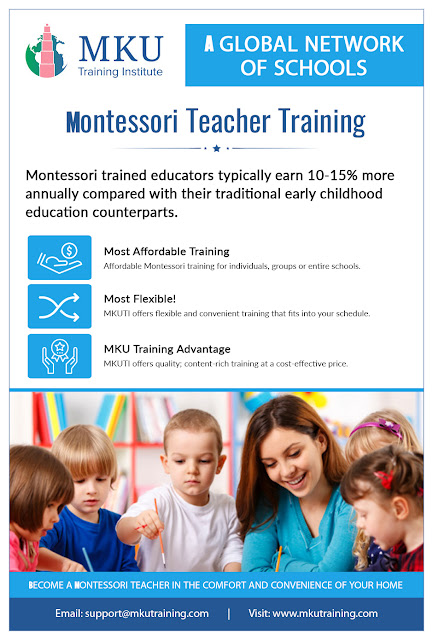Can you take online Montessori training?
People enrolling in Montessori training online are driven with a zest to accomplish proficiency in the course. They are mature and responsible people who are building themselves to take the duty of shaping the minds of toddlers that will step out from the cocooned safety of their homes to a world that is largely new and unknown. Therefore not just providing security but safety and trust that children will unquestionably accept, online training demands self-discipline and self-teaching to a great extent.
Online Montessori training is self-paced
A certified online Montessori training institute shares its lesson plan with students from the time of enrollment. Learners can navigate their lessons independently to understand their lessons. Though classes are held periodically the way to approach the lesson is supported by large instructions directing students with a competent lesson plan to proceed and conclude the lessons within a timeframe. The lesson plan includes ways to grip the attention of students who are largely dependent on online training owing to restrictions of in-person schools after the COVID pandemic.
Learners enjoy greater independence
Online lesson plans offer greater freedom of learning and unlike restrictive classroom modes; the environment suits the comfort that the student prefers. It could be the bedroom, living room, or your workplace. You can study from anywhere without being monitored or questioned. This independence of learning can be an advantage and a disadvantage. Self-discipline has played a large role in shaping the decision of the student. You can choose to complete your course in a year or take three years. The faster you complete, the sooner will you will work in your dream profession or at the institution that you had always longed to be a part of.
An enterprising approach to home teaching
The training program after COVID in institutes that impart Montessori teacher training also involves the participation of parents. With children taking their lessons from home, the training curriculum will involve the inclusion of parents and how they can be directed in the right way to help the trainer impart lessons logically. Under the given situation, it defeats the idea of bringing children out from their home-sheltered conditions; however, revised lesson plans innovate with what is in hand. These dynamics in Montessori training make it so effective.
Conclusion
The essence of Montessori teaching lies in training toddlers through active in-person interaction which cannot be temporary. But scopes in Montessori teacher training have to address the pandemic crisis and shape lesson plans to teach aspiring Montessori teachers how new approaches must be applied to fit into the demand that the pandemic has created. This essential of the lesson remains the same but the approach demands flexibility. Enroll in an online Montessori training institute that delivers what it promises; https://mkutraining.com/ has the freshest approach to Montessori training that will prepare you for future challenges.


























